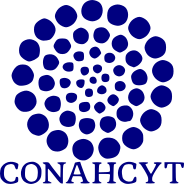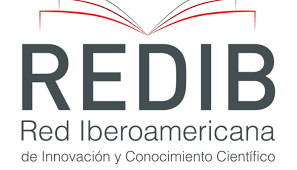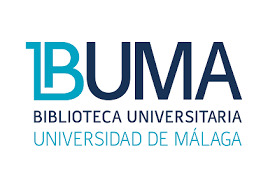Efecto acaricida y ovicida de los aceites esenciales de Chenopodium ambrosioides L. y Peperomia inaequalifolia Ruiz & Pav. contra Tetranychus urticae en fresa (Fragaria spp.)
DOI:
https://doi.org/10.18387/polibotanica.57.14Palabras clave:
Peperomia inaequalifolia, Tetranychus urticae, ovicida, acaricida, aceite esencialResumen
El presente estudio tuvo como objetivo evaluar el efecto acaricida de los aceites esenciales de Chenopodium ambrosioides L. y Peperomia inaequalifolia Ruiz & Pav. sobre huevos y hembras adultas de Tetranychus urticae en plantas de fresa (Fragaria spp). Los aceites esenciales de las especies se obtuvieron por arrastre de vapor y se analizaron mediante la técnica de cromatografía gaseosa acoplada a espectrometría de masas (CG/EM). Los aceites y sus mezclas se diluyeron en dimetilsufóxido (DMSO) a concentraciones en un rango comprendido entre 0,5% y 4% para los ensayos ovicidas, y entre 2,5% y 0,125% para las pruebas acaricidas. Las diversas soluciones se pusieron en contacto con huevos de T. urticae para determinar su viabilidad, y en hembras adultas del ácaro para determinar la letalidad como CL50, en tratamientos completamente al azar. Como controles positivos se emplearon tetradifon (ovicida) y abemectina (acaricida) y como control negativo DMSO. La química de los aceites evidenció como moléculas más abundantes al silvestreno (18,68 %), trans-p-Mentha-2,8-dienol (18,06 %), trans-p-menta-1(7),8-dien-2-ol (11,75%) y cis-p-menta-1(7),8-dien-2-ol (11,74%) en C. ambrosioides; elemicina (36,33%) y miristicina (20.21%) en P. inaequalifolia. Los aceites esenciales resultaron ser bastante eficientes al momento de inhibir el desarrollo de los huevos del ácaro. Los ensayos sobre hembras adultas muestran conductas diversas en los aceites esenciales, en donde la letalidad es alta en P. inaequalifolia y discreta en C. ambrosioides. De forma general observamos una actividad significativa de los aceites y sus mezclas como ovicidas y a P. inaequalifolia como un aceite con potencial acaricida
Referencias
Adesanya, A. W., Lavine, M. D., Moural, T. W., Lavine, L. C., Zhu, F., & Walsh, D. B. (2021). Mechanisms and management of acaricide resistance for Tetranychus urticae in agroecosystems. In Journal of Pest Science (Vol. 94, Issue 3). https://doi.org/10.1007/s10340-021-01342-x
Afify, A. E. M. M. R., Ali, F. S., & Turky, A. F. (2012). Control of Tetranychus urticae Koch by extracts of three essential oils of chamomile, marjoram and Eucalyptus. Asian Pacific Journal of Tropical Biomedicine, 2(1). https://doi.org/10.1016/S2221-1691(11)60184-6
Aglagane, A., Laghzaoui, E. M., Soulaimani, B., Er-Rguibi, O., Abbad, A., Mouden, E. H. El, & Aourir, M. (2022). Acaricidal activity of Mentha suaveolens subsp. timija, Chenopodium ambrosioides, and Laurus nobilis essential oils, and their synergistic combinations against the ectoparasitic bee mite, Varroa destructor (Acari: Varroidae). Journal of Apicultural Research, 61(1). https://doi.org/10.1080/00218839.2021.1898787
Aguilar, G., Calva, J., Cartuche, L., Salinas, M., & Armijos, C. (2023). Chemical Constituents, Enantiomer Content, Antioxidant and Anticholinesterase Activities of Valeriana microphylla Kunth Essential Oil. Plants, 12(11). https://doi.org/10.3390/plants12112155
Aragón, J. P., Parra, E., Chicaiza, Á., & Aragón, M. (2019). Análisis de la cadena agroproductiva de cebada (Hordeum vulgare) del Carchi y frutilla (Fragaria sp) en Pichincha. Natura@economía, 4(2). https://doi.org/10.21704/ne.v4i2.1410
Babushok, V. I., Linstrom, P. J., & Zenkevich, I. G. (2011). Retention Indices for Frequently Reported Compounds of Plant Essential Oils. Journal of Physical and Chemical Reference Data, 40(4). https://doi.org/10.1063/1.3653552
Bamel, K., & Gulati, R. (2021). Biology, population built up and damage potential of Red spider mite, Tetranychus urticae Koch (Acari: Tetranychidae) on marigold: A review. Journal of Entomology and Zoology Studies, 9(1). https://doi.org/10.22271/j.ento.2021.v9.i1h.8201
Chekem, M. S. G., Lunga, P. K., Tamokou, J. de D., Kuiate, J. R., Tane, P., Vilarem, G., & Cerny, M. (2010). Antifungal properties of Chenopodium ambrosioides essential oil against candida species. Pharmaceuticals, 3(9). https://doi.org/10.3390/ph3092900
Deaquiz Oyola, Y. A., Torres cabra, E., & Espinosa Suarez, C. L. (2022). Actividad acaricida in vitro del aceite esencial de tomillo contra el ácaro rojo (Dermanyssus gallinae). Revista de Investigación Agraria y Ambiental, 14(1). https://doi.org/10.22490/21456453.5822
İnak, E., Alpkent, Y. N., Çobanoğlu, S., Dermauw, W., & Van Leeuwen, T. (2019). Resistance incidence and presence of resistance mutations in populations of Tetranychus urticae from vegetable crops in Turkey. Experimental and Applied Acarology, 78(3). https://doi.org/10.1007/s10493-019-00398-w
Jaramillo C, B. E., Duarte R, E., & Delgado, W. (2012). Bioactivity of essential oil from Colombian Chenopodium ambrosioides. Revista Cubana de Plantas Medicinales, 17(1).
Jardim, C. M., Jham, G. N., Dhingra, O. D., & Freire, M. M. (2008). Composition and antifungal activity of the essential oil of the brazilian Chenopodium ambrosioides L. Journal of Chemical Ecology, 34(9). https://doi.org/10.1007/s10886-008-9526-z
Kasali, F. M., Tusiimire, J., Kadima, J. N., & Agaba, A. G. (2021). Ethnomedical uses, chemical constituents, and evidence-based pharmacological properties of Chenopodium ambrosioides L.: extensive overview. Future Journal of Pharmaceutical Sciences, 7(1). https://doi.org/10.1186/s43094-021-00306-3
Kouam, M. K., Payne, V. K., Miégoué, E., Tendonkeng, F., Lemoufouet, J., Kana, J. R., Boukila, B., Pamo, E. T., & MNM, B. (2015). Evaluation of In Vivo Acaricidal Effect of Soap Containing Essential Oil of Chenopodium ambrosioides Leaves on Rhipicephalus lunulatus in the Western Highland of Cameroon . Journal of Pathogens, 2015. https://doi.org/10.1155/2015/516869
Liu, Z., Wu, F., Liang, W., Zhou, L., & Huang, J. (2022). Molecular Mechanisms Underlying Metabolic Resistance to Cyflumetofen and Bifenthrin in Tetranychus urticae Koch on Cowpea. International Journal of Molecular Sciences, 23(24). https://doi.org/10.3390/ijms232416220
Mendoza Léon, D., Dobronski Arcos, J., Vásquez Freytez, C., Frutos Pinto, V., & Paredes Carreño, S. (2018). Control de Tetranychus urticae koch (Acari: Tetranychidae) con Bacillus subtilis en hojas de fresa (Fragancia vesca). Agronomía Costarricense. https://doi.org/10.15517/rac.v43i1.35676
Miresmailli, S., Bradbury, R., & Isman, M. B. (2006). Comparative toxicity of Rosmarinus officinalis L. essential oil and blends of its major constituents against Tetranychus urticae Koch (Acari: Tetranychidae) on two different host plants. Pest Management Science, 62(4). https://doi.org/10.1002/ps.1157
Namin, H. H., Zhurov, V., Spenler, J., Grbić, M., Grbić, V., & Scott, I. M. (2020). Resistance to pyridaben in Canadian greenhouse populations of two-spotted spider mites, Tetranychus urticae (Koch). Pesticide Biochemistry and Physiology, 170. https://doi.org/10.1016/j.pestbp.2020.104677
Noriega Rivera, P. (2009). Extracción, química, actividad biológica, control de calidad y potencial económico de los aceites esenciales. La Granja, 10(2). https://doi.org/10.17163/lgr.n10.2009.01
Nunes, G., & Novello, D. (2021). MORANGO (FRAGARIA X ANANASSA DUCH): PRODUTIVIDADE, COMPOSIÇÃO QUÍMICA, NUTRICIONAL E SENSORIAL. Revista Valore, 6. https://doi.org/10.22408/reva602021279e-6002
Nwanade, C. F., Wang, M., Wang, T., Zhang, X., Zhai, Y., Zhang, S., Yu, Z., & Liu, J. (2021). The acaricidal activity of cinnamon essential oil: current knowledge and future perspectives. International Journal of Acarology, 47(5). https://doi.org/10.1080/01647954.2021.1936632
Patel, N. B., Bhatt, N. A., & Patel, C. C. (2020). Effect of weather parameters on incidence of brinjal mite, Tetranychus urticae Koch and its predatory mite, Amblyseius alstoniae Gupta. Journal of Pharmacognosy and Phytochemistry, 9(4), 3095–3099.
Rivera, P. N., Mosquera, T., Baldisserotto, A., Abad, J., Aillon, C., Cabezas, D., Piedra, J., Coronel, I., & Manfredini, S. (2015). Chemical Composition and in-vitro biological activities of the essential oil from leaves of Peperomia inaequalifolia Ruiz & Pav. In ~ 29 ~ American Journal of Essential Oils and Natural Products (Vol. 2, Issue 4).
Santacruz Paola, Noriega Paco (2016). La Congona: Evaluación del efecto acaricida del aceite esencial de las hojas de Congona sobre ácaros de frutilla. Editorial Académica Española. Madrid España
Schmidt-Jeffris, R. A., Coffey, J. L., Miller, G., & Farfan, M. A. (2021). Residual Activity of Acaricides for Controlling Spider Mites in Watermelon and Their Impacts on Resident Predatory Mites. Journal of Economic Entomology, 114(2). https://doi.org/10.1093/jee/toaa320
Schulze, T. L., & Jordan, R. A. (2021). Synthetic pyrethroid, natural product, and entomopathogenic fungal acaricide product formulations for sustained early season suppression of host-seeking ixodes scapularis (Acari: Ixodidae) and Amblyomma americanum nymphs. Journal of Medical Entomology, 58(2). https://doi.org/10.1093/jme/tjaa248
Selles, S. M. A., Kouidri, M., González, M. G., González, J., Sánchez, M., González-Coloma, A., Sanchis, J., Elhachimi, L., Sonia Olmeda, A., Tercero, J. M., & Valcárcel, F. (2021). Acaricidal and repellent effects of essential oils against ticks: A review. In Pathogens (Vol. 10, Issue 11). https://doi.org/10.3390/pathogens10111379
Valarezo, E., Herrera-García, M., Astudillo-Dávila, P., Rosales-Demera, I., Jaramillo-Fierro, X., Cartuche, L., Meneses, M. A., & Morocho, V. (2023). Study of the Chemical Composition and Biological Activity of the Essential Oil from Congona (Peperomia inaequalifolia Ruiz and Pav.). Plants, 12(7). https://doi.org/10.3390/plants12071504
Wu, Y., Ren, D., Gao, C., Li, J., Du, B., Wang, Z., & Qian, S. (2021). Recent advances for alkaloids as botanical pesticides for use in organic agriculture. In International Journal of Pest Management. https://doi.org/10.1080/09670874.2021.1917723
Descargas
Publicado
Número
Sección
Licencia

Polibotánica por Departamento de Botánica de la Escuela Nacional de Ciencias Biológicas del Instituto Politécnico Nacional se distribuye bajo una Licencia Creative Commons Atribución-NoComercial-CompartirIgual 4.0 Internacional.




















